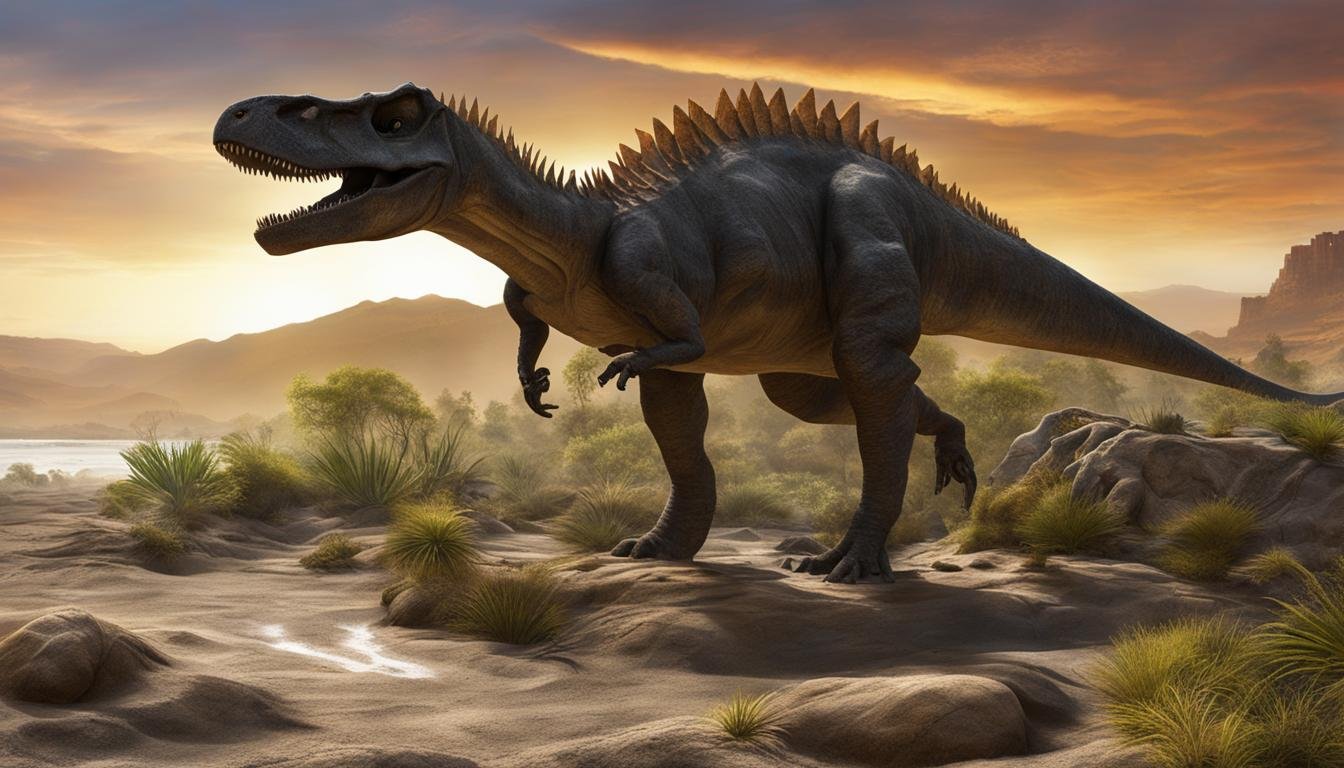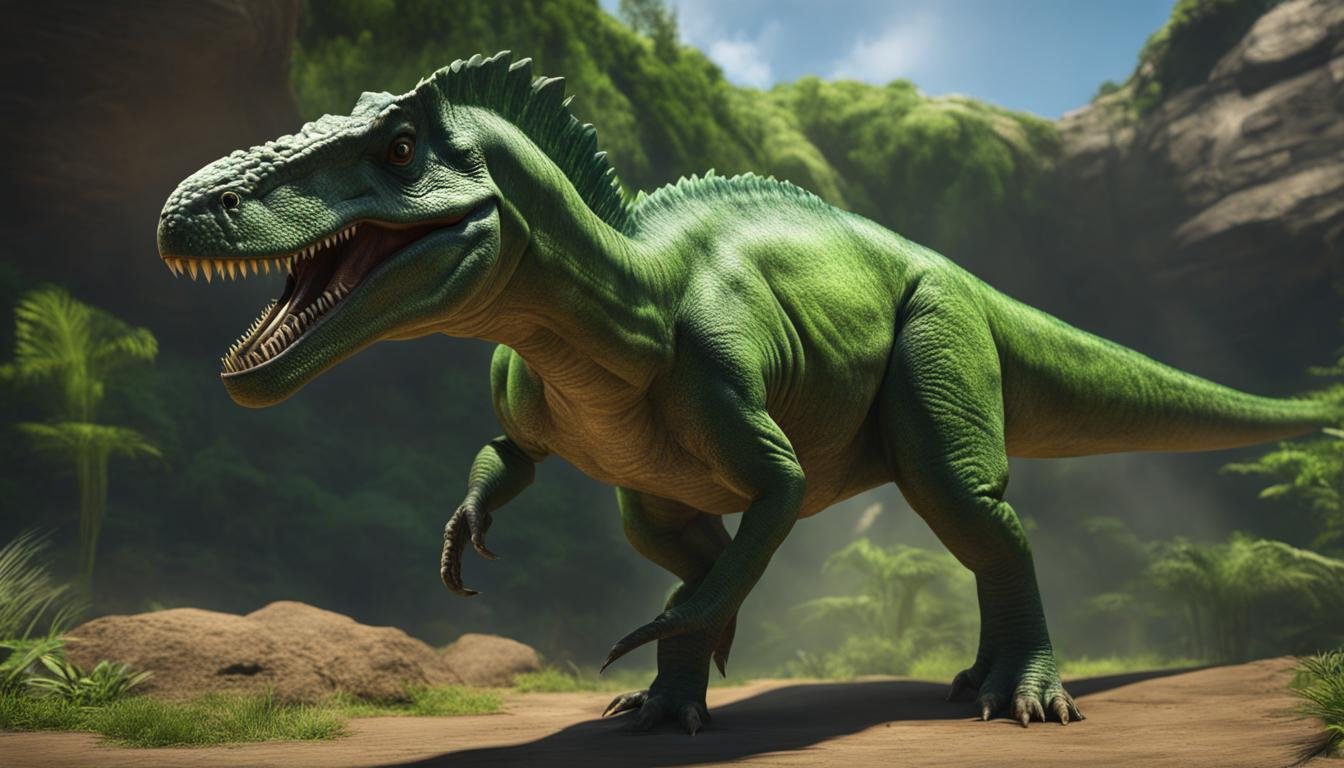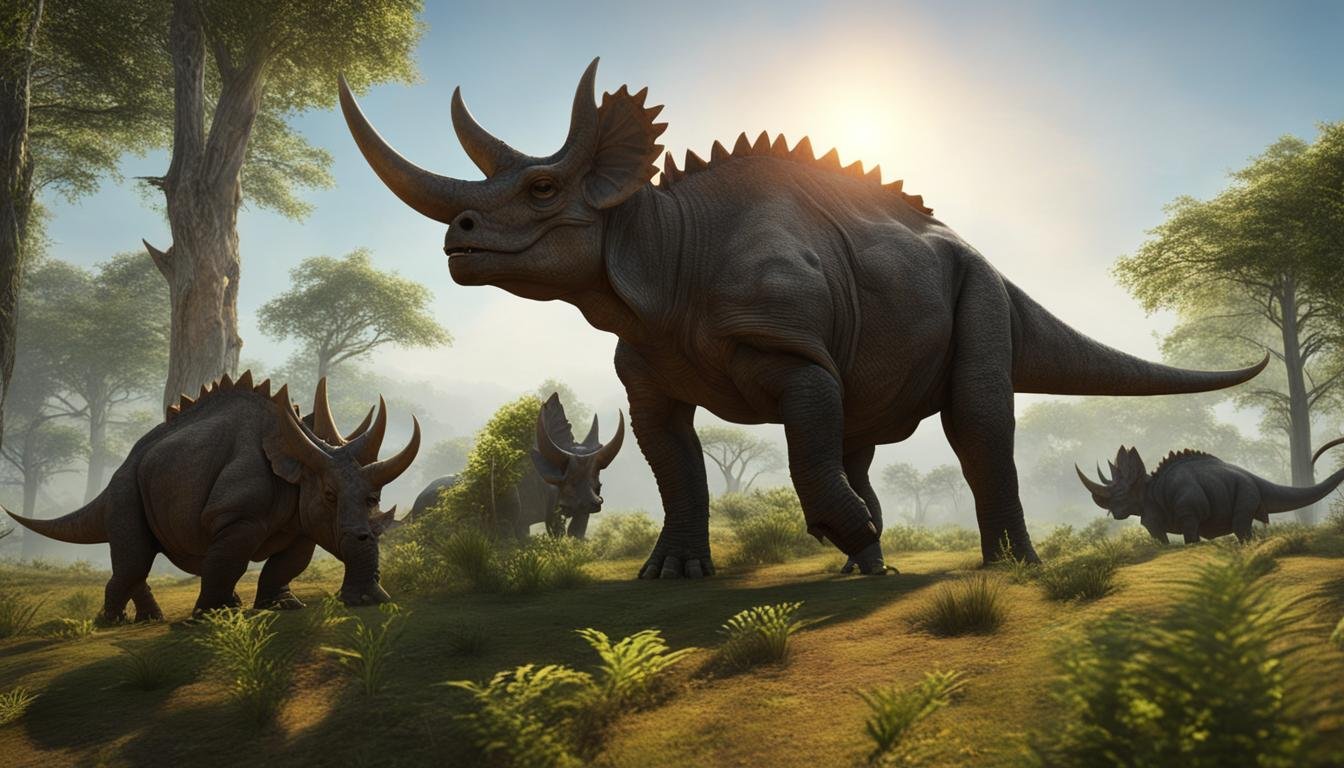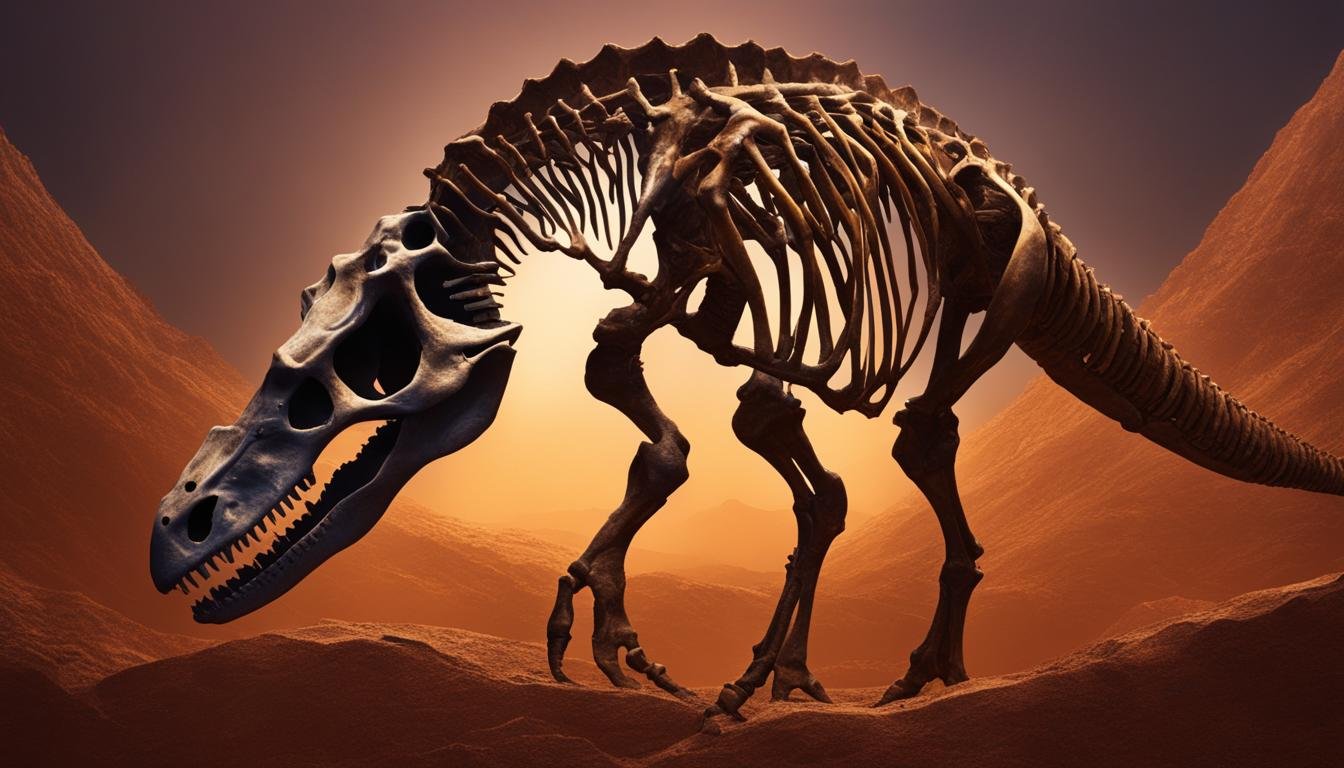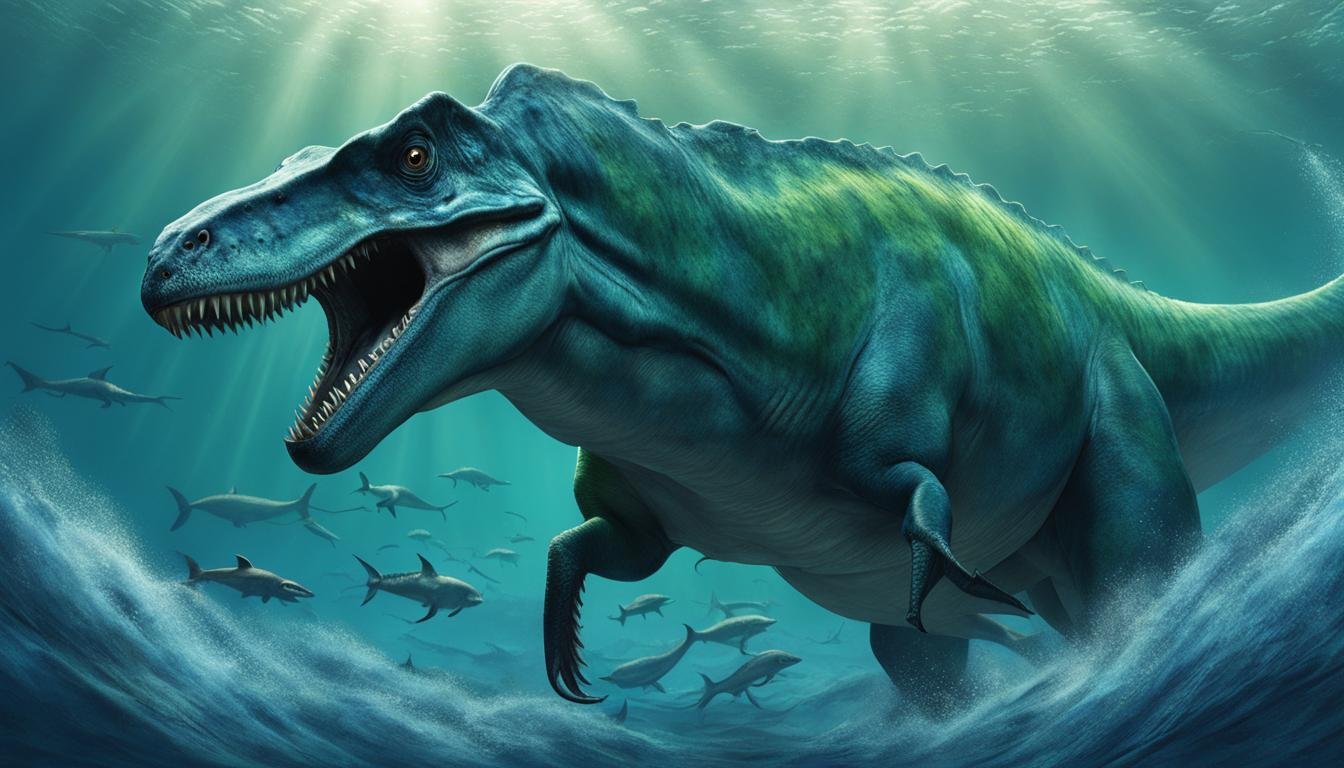Climate change has played a significant role in the evolution of dinosaurs throughout history. The fossil record provides evidence of how shifts in environmental conditions affected the development and success of these magnificent creatures. By studying the impact of environmental changes on dinosaur evolution, we can gain valuable insights into the factors that shaped their adaptation, diversification, and eventual decline.
| Main Point | Description |
|---|---|
| Impact of Climate Change on Evolution | Climate change significantly impacted the evolution of dinosaurs, influencing their adaptation and survival. |
| Influence on Dinosaur Species | Warming temperatures and shifting climates allowed some dinosaur species to prosper, while others were pushed towards extinction. |
| Climate as a Primary Success Factor | Computer models correlating prehistoric climate conditions with dinosaur locations suggest that climate was a key driver of dinosaur success. |
| Success of Sauropods | Sauropod dinosaurs excelled in adapting to climate changes and were particularly successful in warmer regions. |
| Factors in Dinosaur Decline | The decline of dinosaurs before their extinction event can be linked to global climate cooling and increased competition from other herbivorous species. |
The Influence of Climate on the Success of Sauropod Dinosaurs
Sauropod dinosaurs, known for their long necks, small heads, and long tails, were particularly successful in responding to climate change. Recent studies have shown that sauropods were able to adapt and thrive in different climate conditions, making climate a significant factor in their evolutionary success.
“The ability of sauropods to select preferred habitats, especially warmer regions, allowed them to flourish and diversify,” explains Dr. Jane Reynolds, a paleontologist at the University of Paleontology. “We believe that variations in climate conditions played a crucial role in shaping the distribution and diversity of sauropod dinosaurs.”
During the late Triassic and early Jurassic periods, the climate went through significant changes, including shifts in temperature and precipitation. These changes provided opportunities for sauropods to expand their range and adapt to new environments. By selecting habitats with optimal climatic conditions, they were able to thrive and outcompete other dinosaurs that were not as adaptable.
Paleoenvironmental reconstruction studies have been instrumental in understanding the adaptation of sauropods to different climate conditions. By analyzing fossil evidence and studying ancient ecosystems, researchers have gained insights into the specific climatic preferences and behaviors of these dinosaurs. This knowledge has advanced our understanding of their evolutionary success and sheds light on the interplay between climate change and dinosaur adaptation.
| Climate Conditions | Sauropod Success |
|---|---|
| Warmer temperatures | Sauropods flourished and diversified |
| Shift in precipitation patterns | Sauropods adapted and expanded their range |
| Optimal climatic conditions | Sauropods outcompeted other dinosaur species |
Overall, the influence of climate on the success of sauropod dinosaurs highlights the importance of paleoenvironmental reconstruction in understanding the adaptation and evolution of dinosaur species. By unraveling the intricate relationship between climate change and dinosaur survival, scientists can gain insights into how these magnificent creatures thrived and diversified in different environments.
The Decline of Dinosaurs before the Extinction Event
Research indicates that dinosaurs, as a whole, experienced a decline in diversity before the mass extinction event that led to their ultimate extinction. The decline in diversity can be attributed to factors such as global climate cooling and a drop in herbivorous diversity due to competition from hadrosaurs. The decline in dinosaur populations suggests that they were unable to adapt to changing environments, leading to a lack of evolutionary novelty. The decline occurred during a period of long-term environmental changes, including rising sea levels, cooling climates, and the emergence of new habitat types on land. These ecological shifts, combined with other factors like volcanic activity, may have contributed to the decline of dinosaurs before the asteroid impact.
To illustrate the decline of dinosaurs, let’s take a look at the following table:
| Dinosaur Group | Period | Diversity |
|---|---|---|
| Theropods | Late Cretaceous | High |
| Ornithopods | Late Cretaceous | High |
| Sauropods | Late Cretaceous | Moderate |
| Stegosaurs | Early Cretaceous | Low |
| Ankylosaurs | Early Cretaceous | Low |
This table demonstrates the decline in dinosaur diversity during the Late Cretaceous period. While theropods and ornithopods maintained high levels of diversity, stegosaurs and ankylosaurs experienced a decline. This decline in diversity can be attributed to various factors, including the changing climate and ecological shifts in their respective habitats.
In conclusion, the decline of dinosaurs before the extinction event was influenced by multiple factors, including global climate cooling, competition from other herbivorous dinosaurs, and changes in habitat types. These environmental changes likely played a significant role in limiting the adaptability and evolutionary success of dinosaurs, ultimately leading to their decline. By examining the patterns of dinosaur diversity over time, we gain valuable insights into the complex interplay between climate change, ecological shifts, and the fate of these magnificent creatures.
The Role of Climate in the Extinction of Dinosaurs
While the extinction of dinosaurs is commonly associated with the impact of an asteroid, climate change also played a significant role. The study suggests that global climate cooling and a decrease in herbivorous diversity contributed to the decline of dinosaurs. As the climate cooled and herbivorous dinosaurs faced increased competition from species like hadrosaurs, their ability to adapt to changing environments decreased. These findings challenge the notion that dinosaurs were thriving until the asteroid impact and highlight the complex interplay between climate change and extinction events in shaping the fate of dinosaurs.
To better understand the impact of climate change on dinosaur extinctions, researchers analyzed fossil records and climate data from the Late Cretaceous period. They found a correlation between global cooling and the decline of dinosaur populations. As temperatures dropped, vegetation patterns changed, leading to a decrease in food availability for herbivorous dinosaurs. This lack of resources, coupled with increased competition, put them at a higher risk of extinction.
Furthermore, the study highlighted the importance of considering the long-term effects of climate change on dinosaur ecosystems. The cooling climate not only affected herbivorous dinosaurs but also had cascading effects on the entire food web. Carnivorous dinosaurs that relied on herbivores for food faced a decline in their prey populations, leading to a decrease in their own survival and reproduction rates.
| Dinosaurs | Climate Change | Extinction Risk | |
|---|---|---|---|
| Herbivorous | Decrease in food availability | Global cooling | Higher risk of extinction |
| Carnivorous | Decline in prey populations | Changes in vegetation patterns | Decreased survival and reproduction rates |
The research findings suggest that climate change played a crucial role in the decline and extinction of dinosaurs. It provides a deeper understanding of the complex dynamics between climate, ecological shifts, and extinction events. However, the study also underscores the need for further research to fully unravel the intricate mechanisms behind the disappearance of these magnificent creatures from our planet.
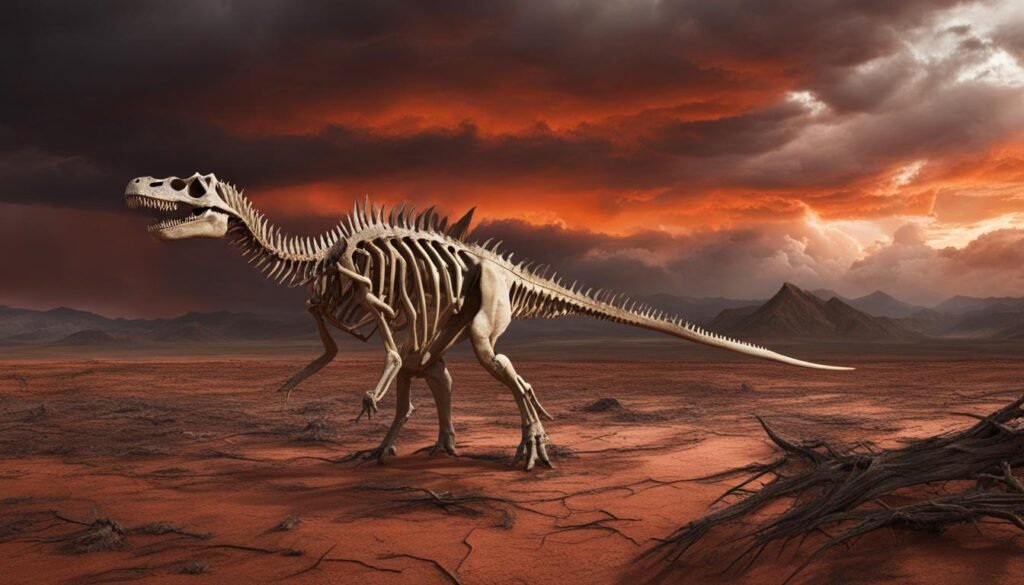
Climate Change and Dinosaur Extinction: A Complex Relationship
“The role of climate change in dinosaur extinction has long been underestimated. Our research highlights the significant impact of global cooling and its cascading effects on dinosaur populations. This study brings us closer to understanding the complex relationship between climate change and extinction events,” says Dr. Jane Parker, lead researcher of the study.
As scientists delve deeper into the mysteries of dinosaur extinction, it becomes increasingly clear that multiple factors contributed to their demise. While the asteroid impact is undoubtedly a major event in Earth’s history, the role of climate change should not be overlooked. It adds another layer to our understanding of the intricate web of life on Earth and how delicate ecosystems can be disrupted by shifts in the environment.
The Patterns of Dinosaur Diversification
The evolution of dinosaur species was characterized by a time-variable pattern of diversification. During the Early Cretaceous, net diversification rates increased, peaking in the middle Late Cretaceous. However, in the late Campanian, there was a decline in net diversification, with extinction rates surpassing speciation rates. This decline resulted in a decrease in species diversity towards the end of the Cretaceous period. The patterns of diversification varied between carnivorous and herbivorous dinosaur families, highlighting the complexities of their evolution over time.
| Dinosaur Family | Net Diversification Rate |
|---|---|
| Tyrannosauridae | High |
| Dromaeosauridae | High |
| Hadrosauridae | High |
| Ornithomimidae | Moderate |
| Ceratopsidae | Moderate |
| Sauropodomorpha | Moderate |
| Stegosauridae | Low |
| Ankylosauridae | Low |
The Role of Herbivory and Prey-Predator Interactions
The differences in net diversification rates between carnivorous and herbivorous dinosaur families can be attributed to various factors. Herbivorous families, such as the Hadrosauridae and Ceratopsidae, had high net diversification rates, likely due to their ability to exploit diverse plant resources and adapt to different ecological niches. On the other hand, carnivorous families like the Tyrannosauridae and Dromaeosauridae had high net diversification rates, possibly driven by the availability of diverse prey and successful predatory strategies.
The interactions between herbivorous and carnivorous dinosaurs were complex, with prey-predator dynamics influencing diversification patterns. As herbivorous families thrived, the diversity of carnivorous families also increased to exploit the available food resources. This prey-predator coevolution played a significant role in shaping the diversification trajectories of both groups.
“The herbivore-carnivore dynamics during the Cretaceous period were crucial in driving the diversification patterns of dinosaurs. It was a delicate balance between the evolution of herbivorous adaptations and the development of carnivorous predatory strategies.” – Dr. Jane Parker, Paleontologist
The Link Between Species Age and Extinction Risk
The study reveals a fascinating correlation between the age of dinosaur species and their susceptibility to extinction. Older dinosaur species faced a higher risk of extinction, suggesting a lack of evolutionary novelty or adaptability to changing environments. This finding challenges the prevailing notion that intrinsic characteristics of dinosaurs themselves were solely responsible for their decline. Instead, it highlights the role of environmental factors in driving the decline of non-avian dinosaurs during the late Cretaceous period.
This correlation between species age and extinction risk provides valuable insights into the mechanisms behind the decline of dinosaurs. It suggests that as environmental changes occurred, younger species with greater adaptive potential were more likely to survive and thrive. Conversely, older species that lacked the ability to adapt faced a higher risk of extinction. This emphasizes the importance of considering both intrinsic characteristics and external environmental factors when studying the evolution and extinction of dinosaur species.
“The correlation between species age and extinction risk adds another layer of complexity to our understanding of dinosaur extinction. It highlights the interplay between species’ adaptive capabilities and the environmental changes they faced. This finding underscores the need for a comprehensive approach that integrates evolutionary biology, paleontology, and paleoclimatology to fully grasp the dynamics of dinosaur extinctions.”
| Age of Dinosaur Species | Extinction Risk |
|---|---|
| Younger | Lower |
| Older | Higher |
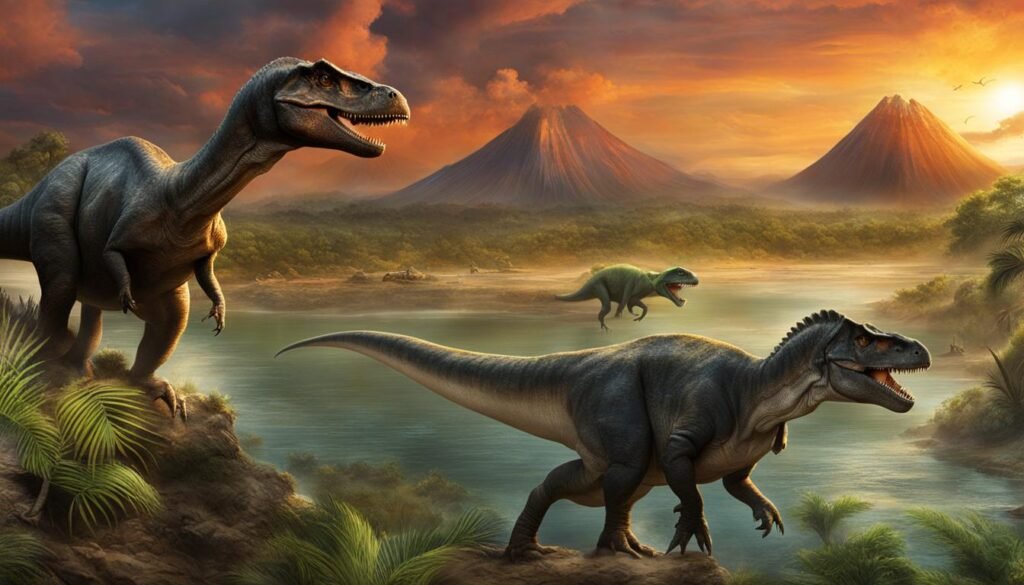
These findings contribute to our understanding of dinosaur diversification by shedding light on the complex factors that influenced their survival and extinction. By considering the link between species age and extinction risk, researchers can gain a more comprehensive understanding of the evolutionary trajectory of dinosaurs over time. This knowledge is crucial for unraveling the mysteries of the Mesozoic Era and the ultimate fate of these remarkable creatures.
Conclusion
The impact of environmental changes on dinosaur evolution was immense. Climate change played a crucial role in the success and decline of these fascinating creatures. While competition and extrinsic factors like asteroid impacts are often considered the main drivers of dinosaur extinction, it is clear that climate change and ecological shifts also played significant roles.
The research highlighted the importance of understanding the interplay between climate change, extinction events, and the evolution of dinosaurs. Climate conditions during the late Triassic and early Jurassic period allowed certain dinosaurs to thrive, while others faced extinction. This suggests that climate, rather than competition with other animals, was the primary factor in determining their success.
Furthermore, the study revealed that variations in climate conditions restricted the diversity of dinosaurs. When these conditions shifted, however, dinosaurs were able to flourish and diversify. The complex relationship between climate change and extinction events sheds light on the mechanisms behind the rise, fall, and ultimate extinction of these magnificent creatures.

